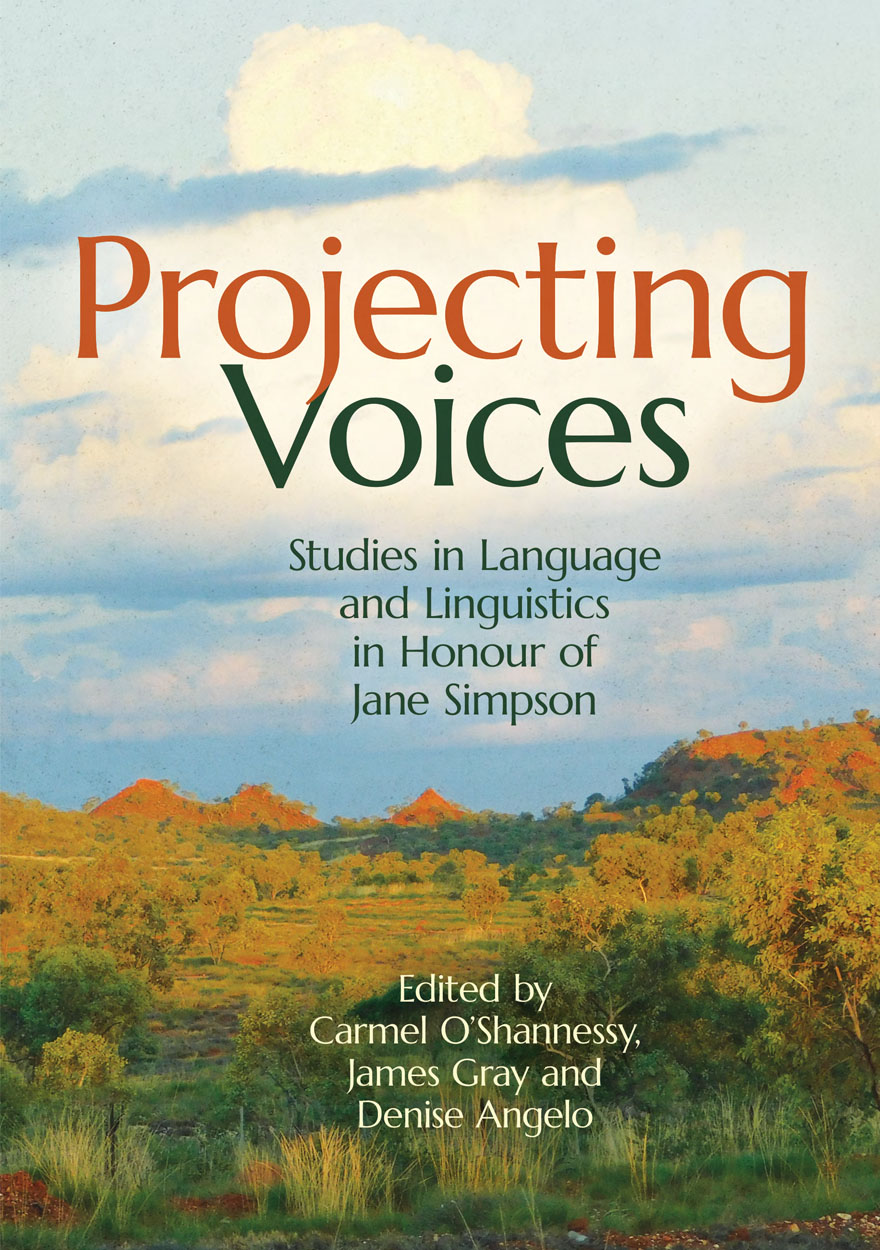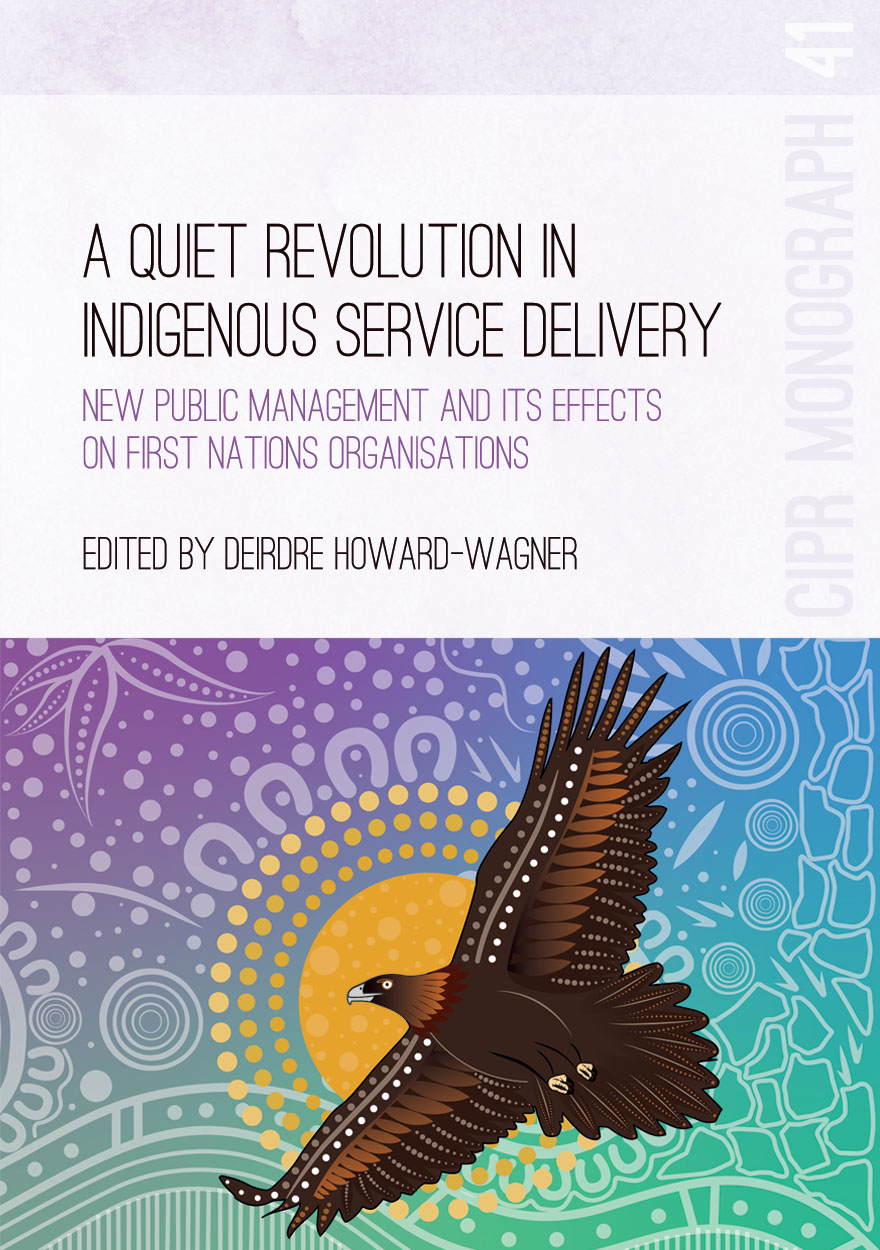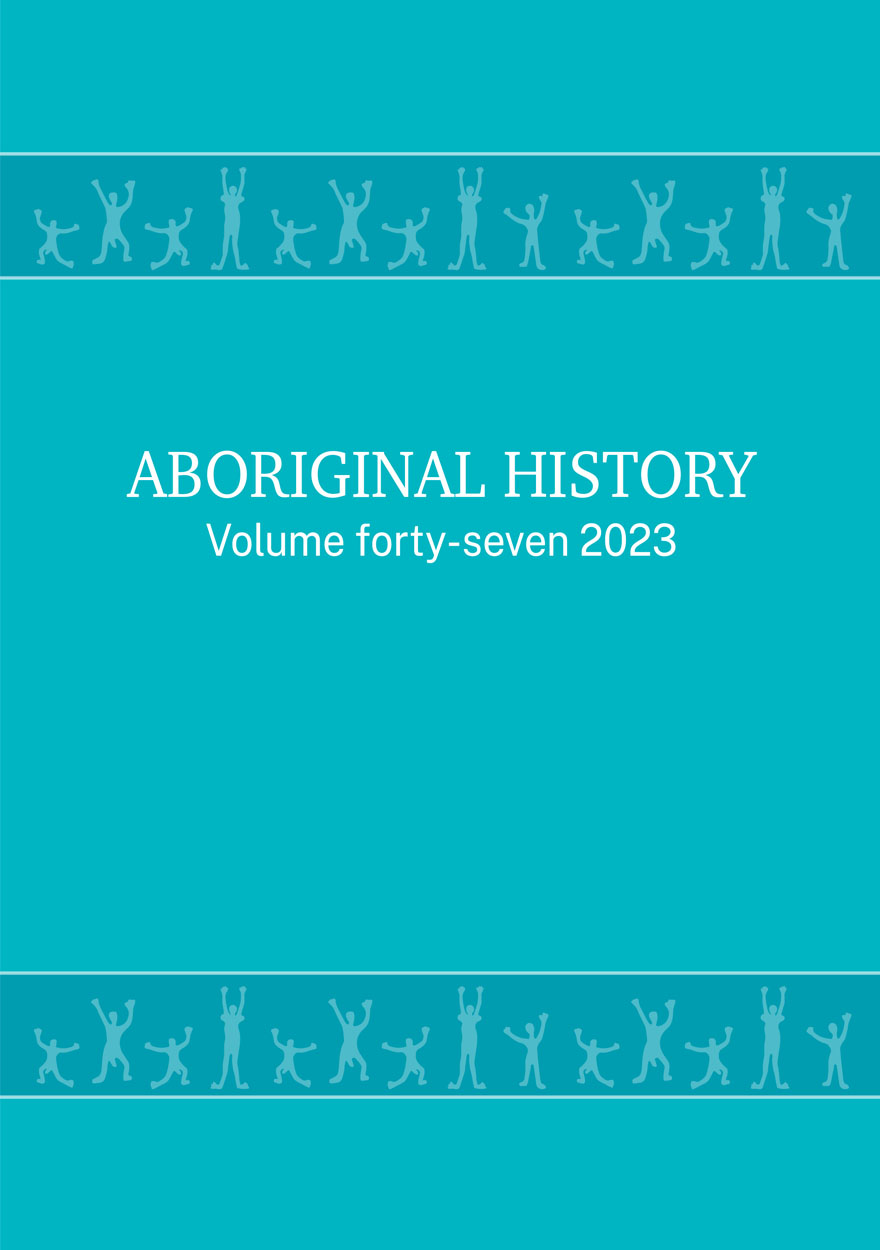Search titles
Displaying results 1 to 10 of 211.

Peter Marralwanga »
Painter of the Djang of western Arnhem Land
Authored by: Luke Taylor, Ivan Namirrkki
Publication date: 2026
Peter Marralwanga (1916–1987) was a leading figure in one of the great art practices of the world. He grew up in western Arnhem Land surrounded by artists painting in rock shelters and he learned to paint this way himself. The subjects of his paintings were the Djang who made his country and placed the spirits of people within it. Marralwanga’s story highlights the way bark painting became important as a way of evading assimilation policies rife within Northern Territory towns. Marralwanga established an outstation at Marrkolidjban where he could teach his children how to properly care for Ancestral lands, with part of this care involving a knowledge of how to paint. As a senior person who had travelled widely in his youth, and gained extensive ceremonial knowledge, Marralwanga was highly influential among a broad group of painters. Ivan Namirrkki, a painter of note and Peter Marralwanga’s son, has provided here his own account of his father’s life.
This book tracks Marralwanga’s life of learning about country and conveys the religious meaning of numerous major works, offering outsiders a richer understanding and appreciation of Arnhem Land art. It also shows the crucial role of individuals working for the community arts cooperative Maningrida Arts and Culture in facilitating Maralwanga’s rise to recognition as a major Australian and world artist.
Extensively illustrated, Peter Marralwanga: Painter of the Djang of western Arnhem Land, is a study of unique knowledge and beauty.
Coming soon
Notify me
Projecting Voices »
Studies in Language and Linguistics in Honour of Jane Simpson
Publication date: December 2025
This volume provides cutting-edge research on a wide range of questions in linguistics research, mostly centred on Australian Indigenous languages. Written by world-leading experts, the chapters take a fresh look at current questions in each topic, inspired by the work of Australian linguist Jane Simpson.
The chapters have implications for linguistic theory in the areas of historical linguistics, morphosyntax, semantics, the lexicon, language acquisition and issues in languages in education, and renewal of endangered languages.
This volume is essential reading for students and experienced researchers alike, with interests in theoretical and applied linguistics, especially in topics and issues related to Australian Indigenous languages.

Law in the New Democracy »
Authored by: Paula Jane Byrne
Publication date: September 2025
In the 1850s, opposition to the Crown in New South Wales made for unsteady ground for the administration of criminal law. This study of skirmishes between magistrates, constables and the metropolis reveals just how far understandings of law could be stretched and warped by recalcitrant local populations. At Carcoar, the local population entirely controlled how law worked; on the South Coast, ‘the people’ influenced how law intervened in their lives; in the north west of the colony, publicans dominated; on the north coast, violence against First Nations/Aboriginal people was forcibly meshed into the day to day working of the courts. This study shows a ‘frontier’ centred on the coasts and in the minds of legal officials of the metropolis, but elsewhere, some recognition of the Aboriginal polity and an early understanding of Aboriginal rights.
With right of reply by First Nations/Aboriginal people
Coming soon
Notify me
Indigenous Songs of Victoria »
Publication date: 2025
Indigenous Songs of Victoria seeks to do justice to the songsters, the clever men and women of traditional Indigenous societies who made these artistic treasures, as well as to the many people who have valued, written down or otherwise recorded these songs, so that they can be heard, read and delighted in today.
The rich diversity of Indigenous songs collected in this book is a cultural treasure of Victoria and Australia. The authors bring together here well over 100 different song texts with musical transcriptions and analysis, cultural context and, for many, translations.
This volume brings the rich knowledge and artistic skill of the song-makers of Indigenous Victoria to a wider audience and makes the sources of these songs, in manuscripts, old journals and sound recordings, accessible, often for the first time.
Coming soon
Notify me
Aboriginal History Journal: Volume 48 »
Edited by: Crystal McKinnon, Ben Silverstein
Publication date: August 2025
In this volume, Christopher Morton carefully traces the provenance of a Wiradjuri or Gamilaroi marara (tree carving) currently resting at the Pitt Rivers Museum in Oxford, considering its unfinished journey and the way it has been framed and recontextualised, as well as the ways it may experience a future return to good relation with and in Country. Julia Mortensen draws on oral histories of life and mobility in and around the Yumba – a ‘fringe camp’ at Cunnamulla – to narrate generations of autonomy from formal state control, reconsidering the Yumba as a centre of Aboriginal action and community strength: the centre, not the fringe. And on the 35th anniversary of the publication of Henrietta Fourmile’s landmark article ‘Who Owns the Past?’, Kirsten Thorpe returns to this work, centring the archival sovereignty that Fourmile sought and towards which First Nations archivists work today. This sovereignty is reflected in the following conversation between Gundungurra woman Kazan Brown and non-Indigenous historians Emily O’Gorman and Grace Karskens, transcribed by Natalie Osborne, which represents Gundungurra Country as storied, enduring and under threat.
The volume includes two memorial sections, remembering Frances Peters-Little and Lyndall Ryan and reflecting on their vital contributions to this journal and to the wider field of Aboriginal history. Alongside several book reviews, we present a review forum responding to Shannyn Palmer’s Prime Ministers’ Literary Award-winning Unmaking Angas Downs: Myth and History on a Central Australian Pastoral Station.

The Wild Australia Show »
The Story of an Aboriginal Performance Troupe and its Afterlives
Authored by: Paul Memmott, Maria Nugent, Michael Aird, Lindy Allen, Chantal Knowles, Jonathan Richards
Publication date: July 2025
The Wild Australia Show was a troupe of 27 Aboriginal performers recruited from northern Queensland in the 1890s for a world tour that would culminate at the World’s Columbian Exposition in Chicago in 1893. Those grand plans were ultimately dashed, and the troupe only performed in Brisbane, Sydney and Melbourne before disbanding. This book tells the story of the Wild Australia Show from its inception to its afterlives. It traces how the performers were recruited, the places they came from, the repertoire they created, rehearsed and performed, their experiences on tour and the politics of their representation in word and image. Drawing on an extensive archive of newspaper reports, government records, and court proceedings, richly complemented by photographs and other visual images, the authors seek to reconstruct the Wild Australia Show story from the perspectives of the performers themselves. The book contributes to a growing literature on the history of Aboriginal performers and performances under colonial conditions, and the ways in which public performance could be a means for cultural survival and resurgence.
Format: Hardback

A Quiet Revolution in Indigenous Service Delivery »
New Public Management and its Effects on First Nations Organisations
Edited by: Deirdre Howard-Wagner
Publication date: May 2025
The government Indigenous service market that is now well entrenched in the public administration system has operated to marginalise First Nations people and First Nations organisations, who have had very little say, if any, over the last 20 years, about how government services are designed to meet their needs.
The chapters in this volume comprehensively describe and illustrate how the government Indigenous market, and the Indigenous service delivery system created around that market, have failed and why system change is needed.
The book offers the expertise of individual community-controlled First Nations organisations operating in urban settings in NSW, which variously operate as social enterprises, businesses, community development organisations, social service providers, representatives and advocacy organisations.
Concentrating on the experiences of individual First Nations organisations allows us to examine the complex, layered Indigenous service system as a multi-jurisdictional phenomenon on the ground in an urban context.

A Grammar of Warlmanpa »
Authored by: Mitchell Browne
Publication date: November 2024
As spoken by Bunny Naburula, Danny Cooper, Dick Foster, Donald Graham, Doris Kelly, Elizabeth Johnson, George Brown, Gladys Brown, Jack Walker, Jessie Cooper, Jimmy Newcastle, Julie Kelly, Lofty Japaljarri, Louie Martin, May Foster, Norah Graham, Penny Kelly, Penny Williams, Selina Grant, Susannah Nelson, Topsy Walker, Toprail Japaljarri and William Graham.
This volume is a descriptive analysis of Warlmanpa, a highly endangered language traditionally spoken northwest of the town of Tennant Creek, where most of the remaining speakers now live.
This grammatical description is based on language work carried out by community members and linguists since 1952, and is the first published reference grammar of the language.
The major areas of analysis include phonetics, phonology, morphology, and syntax. This volume also provides description of typologically notable features, including: a two-way stop contrast at each place of articulation; a complex second-position auxiliary system containing participant and tense/mood/aspect information; associated motion; and a lack of evidence for noun phrases.
This volume lays the foundation for future Warlmanpa language work.

Aboriginal History Journal: Volume 47 »
Edited by: Crystal McKinnon, Ben Silverstein
Publication date: September 2024
This volume opens with Joakim Goldhahn, Sally May, and Jeffrey Lee’s study of renowned Badmardi artist Nayombolmi, best known for his rock art but here considered as an artist who produced a number of bark paintings for collectors in the 1950s and 1960s. They show us how his representation of public stories of Spirit or Ancestral Beings emerges from a negotiation between the artist, collectors, and dealers, shaping the forms in which he shared Badmardi story.
The following two articles take up the theme of negotiation in contexts of segregation. Sam Furphy describes Yorta Yorta memory activism relating to Queen Elizabeth II’s visit to Yorta Yorta Country in 1954, considering memories of the fence that was erected to place Yorta Yorta people beyond the Queen’s view and prevent any direct relationship between peoples. Cameron Raynes continues to study segregation by considering the disastrous health impacts of the colour bar that excluded Aboriginal people of the Point Pearce Station from the nearby Wallaroo and Maitland Hospitals in the early-mid twentieth century.
The next articles turn to relationships between Aboriginal people and colonists in Queensland. In a collaboratively written article, Alice Buhrich, Lewis Richards, Brian Bing, Jimmy Richards, Sharon Prior, Jenny Lacey, Tania Casey and Megan Mosquito narrate a history of past and ongoing Ewamian resistance to European invasion that stands in stark contrast to myths of Ewamian disappearance. Rebeka Manning and Sally Babidge read archives of Queensland pastoral stations for traces of Aboriginal women’s and girls’ domestic service, taking these hints as occasions for Aboriginal storytelling.
The final article, co-authored by members of the Aboriginal History Archive Will Bracks, Coen Brown, Clare Land, Gary Foley, John Hawkes, Kim Kruger, Rochelle le Pere, Natasha Ritchie and Shannon Woodcock, describes the work of that archive to produce a historical understanding that can provide the basis for describing and enacting Aboriginal self-determination.
The volume also includes a series of book reviews, as well as reflections on the life and work of Niel Gunson and Gordon Briscoe, two key figures in Aboriginal History whose influence is evident throughout these pages.

Rebellion at Coranderrk »
Authored by: Diane Barwick
Publication date: August 2024
More than a century ago an Aboriginal community in Victoria campaigned for recognition of their right to occupy and control the small acreage they had farmed for 25 years. Others wanted to develop this tract. Government spokesmen denied that the occupants had inherited any rights to this land and declared that, anyway, they were not really Aborigines. This book is about the rebellion at Coranderrk Aboriginal Station between 1874 and 1886. It describes how Coranderrk families fought to keep their land. To explain why they fought I must begin with the years before, to show what this ‘miserable spadeful of ground’ meant to them, and how they came to be there. Finally, I sketch what ultimately happened.
First published in 1998, 12 years after the death of its author Diane Barwick, Rebellion at Coranderrk was an attempt to rectify some of the injustices of the past two-hundred-plus years in Australia, and to prevent similar occurrences in the future.
It remains acutely relevant.
This book includes the names and images of people who are now deceased.
‘All Australians have good reason to be grateful to Diane Barwick.’
— H. C. Coombs
‘The painstaking research, the perceptive judgements of people and events, and the brilliant prose combine to produce a magnificent account of the Kulin and their European “administrators”. The book is simply packed with historical reinterpretation and vivid reconstructions of families and individuals.’
— C. T. Stannage
‘The author’s research found that Coranderrk is an excellent example of … an Aboriginal (farming) success story. It is very relevant to modern land-rights protests throughout Australia.’
— Canberra Times



